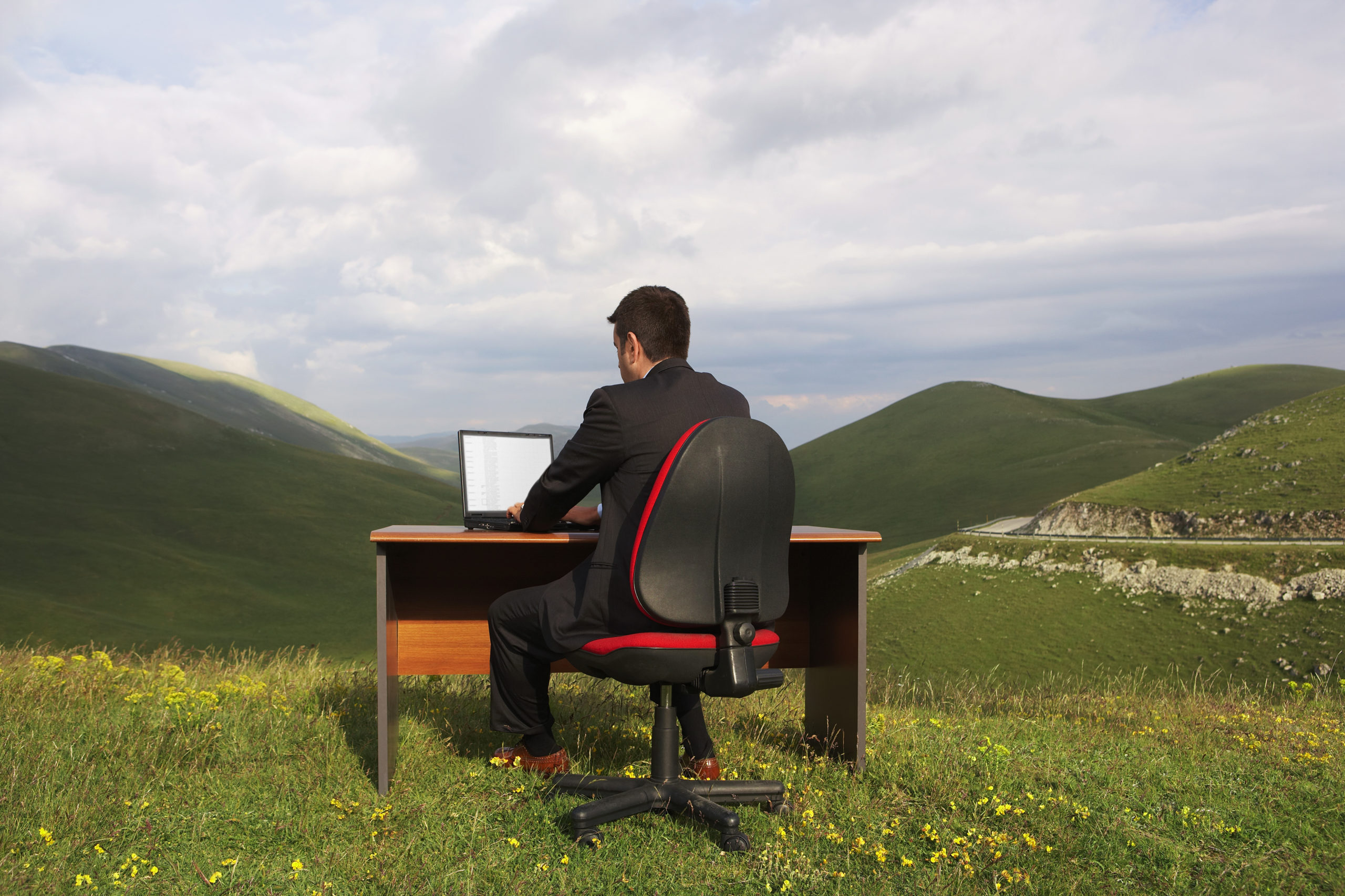
With the gradual easing of COVID restrictions, businesses around the world are helping their employees return to work safely. Something to celebrate after months of lockdown and uncertainty.
However, this step brings new challenges for employers. A raft of important but complicated practical safety measures to implement in the workplace. And more than ever before, an even greater need to consider, and prioritise, the physical and mental wellbeing of their staff.
So what can be done? We asked 30 small businesses to share what they were doing to ensure the safe return of their employees to the workplace. And especially how they were handling the changes needed and what steps they were taking to reassure staff who were anxious about returning.
This is what we learned.
Adjust the workplace and working patterns
Andrew Roderick, CEO of Credit Repair Companies, says: “Desks have been rearranged so that staff aren't too close. There is also going to be a system implemented so the workers must walk a certain way so they won't bump into others or end up walking past each other.”
At Book Learn Pass, big changes have been made too. CEO Amara Ukaigwe explains: “Due to the size of our workspace, it would be impossible to have the entire team working in the office at a safe distance from one other. To allow team members to return to the office safely, we've introduced a rota system. Going forward, only two members of the team will be in the office on any given day, this will help minimise contact between employees."
Many employees are keen to return, but some aren’t
Further, a digital marketing agency, took an innovative approach: “When the government said that people could start returning to offices, our directors sent out a confidential survey asking people to state where they sit in a traffic-light system: red means I don't want to go back to the office for the foreseeable future, amber means I would be open to returning some of the time, if there are suitable safety measures in place, and green means I'm keen to be back in the office as much as possible a soon as possible.
“Staff were fairly evenly split between wanting to return and not wanting to return, so we're now operating a rota system where of the 35 staff members, no more than 10 are in the office at any given time.”
The Suit Depot found that despite giving all employees the option to remain working remotely, most were glad to be able to come back and they’re now almost back to full capacity on site.
Show that you understand the regulations
Kate Diaz, interior designer and owner/writer for Swankyden.com, says: “In my opinion, keeping up to date with government guidelines and following them can make a big difference in the confidence of your employees returning to work. Also, it's important to let them know that you're open to listening to them about their fears and anxieties about going to work and offer a solution that's favourable for both parties.”
Create an open environment for communication
Jenna Carson, HR Manager at Music Grotto, says: “We’re making sure that employees feel that they are able to raise any issues or concerns and that they will be taken seriously. We are prioritising open communication and transparency, and hopefully this will help employees with any anxiety they may have about returning to work.”
Avoid pressurising employees
Tabby Farrar, Senior Outreach Specialist at Further, explains: “Those who don't want to return to the office yet – myself included – are under no pressure whatsoever to do so. All meetings now take place on Zoom as standard regardless of how many attendees are in the physical office, and it's been repeatedly reiterated that there is no judgement about people not wanting to go back – and an appreciation that some of us may prefer to work from home as much as possible permanently from now on.”
Listen to the ideas of your employees
Adam Rowles, CEO of Inbound Marketing Agency, explains: “Our management team met up, decided on how to practice the best safety precautions, and allocated a budget for things like gloves, sanitisers, masks, oxygen meter, etc. We then explained all this to our employees and took suggestions from them as well. Now we are ready to start back up again and everyone is more than happy to join in.”
And employee, Dorota Lysienia, Community Manager at LiveCareer, confirmed this too: “I’m about to return to work soon, but it’s my own decision that I’ve made considering factors like physical and mental health and work-life balance. My company gives me the flexibility to come back to the office on my terms. What helped me to make this decision was the two-way communication with the leadership team.
"As employees, we could see that return to office policy is not set in stone but rather evolves based on our feedback. We are encouraged to engage in discussions about our thoughts and feelings on returning to work and make necessary adjustments along the way. I know that my company listens to me, and the moment I feel insecure, I can change my decision and find a solution that will be best for my employer and me.”
Communication is key
Brandon Monaghan, co-founder of Miracle Brand, says: “Over the last few months, I have made extra efforts to communicate more with my team on an individual basis. I am listening to my employees and asking for their opinions on how to implement positive changes to make significant improvements to our future work environment.
"In addition, to direct communicating and listening, I have set up a feedback portal for my employees. This is meant to give them the opportunity to report any comments or concerns without feeling pressure. As a business owner, I have to value my employees' opinions and consider their concerns when it comes to returning to an office space.”
Jon Zacharias, CEO and founder of The Search Guy, agrees: “As a business owner and employer, I am keeping my employees' health and safety at the top of my concerns. I check-in with my team members daily to make sure they are handling everything well, not only at work but in their personal lives. This is an extremely difficult time for everyone and the only way to get through it is to stay connected, support, and encourage each other.”
Jonathan Bass, CEO and owner of Whomhome.com, adds: “I have been focusing on communicating and listening to any feedback from my employees to keep improving our safety operations and keeping morale high.”
A staggered return gives staff time to adjust
Andrew Roderick has some good advice: “Allowing people time to come to terms with the new normal is important. As a business, a good way of doing this is by introducing a phased return where people aren't expected to be in fully operational in an office straight away, but perhaps doing partial weeks still working from home while they become adjusted and begin to feel more comfortable. It won't be suitable for all businesses, but for those where it is, it could have a much better chance of ensuring your employees are returning motivated and positive.”
Reuben Yonatan, Founder and CEO of GetVoIP, says: “To ensure a safe return of employees, we have offered a buffer period of several months. That means letting our employees work from home a bit longer although we are ready to return to the office. The buffer period is to help employees get used to the idea of coming back to the office. Also, it gives the employees enough time to raise issues that might be causing anxiety. Before returning to the office fully, we will address all the issues and make sure our employees are comfortable with returning to the office.”
This is something the Music Grotto are doing too. HR Manager, Jenna Carson, explains: “Returning to work is a source of anxiety and worry for a lot of people, they’re still concerned about the risk of the virus, and perhaps about sending their children back to school or day-care. We’ve decided to have a staged return to the office, and have made it optional at this stage.
"Some team members are desperate to return to the office and can’t wait to be back, but others need more time. We’re offering those people the option to work remotely for longer while we decide how to proceed for the future.”
Allow remote working where appropriate
The new policy of Credit Repair Companies is: “For those who are apprehensive to return, we are offering for them to stay at home and continue working from there if they are still comfortable. As long as work is being produced on time, it doesn't matter where they are.”
Ashwin Sokke, co-founder of WOW boundSkin Science has also made new discoveries about the benefits of productive home-working: “My company has adjusted very smoothly to all the sudden changes that have occurred due to Covid-19. I think staying connected and putting extra emphasis on communication was vital to our success while working remotely. Our employees are happy working from home and we have seen productivity levels increase since the start of the pandemic. As the situation stands presently, I don't see my business going back to a work environment that existed prior to the pandemic.”
Empower employees to take ownership of the new rules
Daniel Carter runs a small coffee shop: “We have strengthened our policy not to let customers in who are not complying to our rules – and given our employees the right to refuse serving them.”
Take an individual approach to safeguard the most vulnerable staff
At ABC for Dance, leaders have been meeting with each employee virtually or in-person to discuss their concerns and get an idea of their personal and familial risk profile so that they can be safeguarded to the level they need.
Sean McPheat, CEO of MTD Training, has adopted a similar approach: “I’m being flexible with individual circumstances and balancing the business needs. For some of my team childcare and home schooling has been a big issue and for others they have been a little “institutionalised” working from home and are not scared of the health factors but actually scared of interacting again. We’ve conducted a thorough COVID risk assessment and have made our offices COVID safe and secure.
"My staff have really welcomed coming back to work. The ones that have felt a little anxious we have phased back here and there. For others it’s full steam ahead. As an employer I am being sensitive to individual needs in very abnormal circumstances.”
Trust your employees
That’s the advice of Lauren Kleinman, founder of The Quality Edit: “I definitely feel that post-pandemic companies will be more forward-thinking in trusting employees now that new communication and productivity tools have been implemented and adapted.
"Managers have had the time to implement new approaches to managing employees, eliminating the need to physically watch employees’ every move. More companies are meeting employees where they’re at, giving them the flexibility to work on their own terms, as long as performance and objectives continue to be met.”
Avoid returning to how you operated before
For many businesses, homeworking and other adaptions forced upon them by the pandemic has led to new discoveries. For Mikkel Andreassen, Customer Experience Manager at Dixa.com, it’s been a revelation: “I think that going back to an office is a complete waste of resources, as working remotely has proven to be a more efficient and low-cost way to work.”
The COVID pandemic has given Jason Akatiff, co-founder of Boundery, new insights too: “I am looking into downsizing our office space and offering employees the option of having space if they need it but also staying flexible if they choose to continue to work from home. I like the idea of collaborative office rooms, where teams can meet to work together or around each other.
"My business hasn't suffered from closing our offices and my employees have repeatedly shown higher productivity levels and overall happiness while working remotely. I would be foolish not to take this into account when implementing changes to our workplace environment in the future.”
Use technology to adapt to the new way of working
Daniel Foley, Director of Assertive Media, confirms that he’ll be encouraging his employees to continue to rely on virtual technology, such as meeting with clients over Zoom, as much as possible. “It’s about finding a way for myself and the businesses to work productively and responsibly, while reducing any risks.”
Managers need to be aware of employee concerns
One response we got to our survey highlighted a key concern from an employee that managers will need to aware of going forwards: “I am anxious because of my co-workers who are not complying to safety rules of the company. I started working in the office again one month ago. At first I was hesitant about it. But before returning, we were informed of the rules everyone has to observe and it helped me to feel safe. However, some of my co-workers remove their masks once our manager gets back to his office after making rounds.”
Some companies are going the extra mile
London Vape want their employees to feel safe and respected. So this includes not only making sure they have the PPE they need, but also hazard pay that acknowledges the additional risks and efforts their staff are making.
New York dentist, Dr J Salim, is keen to ensure his staff feel safe: “To ensure the safe return of my employees and to raise their morale, I have let them know that we will go well above and beyond requirements and recommendations by authorities. This has helped ease their minds and as a result, all my employees have chosen to come to work every day.”
Monica Eaton-Cardone of Chargebacks911 says: “We’ve introduced a staggered return to the office, where certain departments remain remote to reduce the number of employees coming back. Temperature checks are required for all employees entering the office and sanitising stations are set up throughout the building. We’ve also moved desks to ensure proper distance between co-workers as well as mandated mask wearing in common areas.”
ABC for Dance asks all staff and students to complete COVID-19 screening questions on arrival every day and has installed air filters that use HEPA 13 and charcoal filters with negative ion generation (non-ozone producing) in each of their workspaces.
Evolve and adapt your plans over time
Monica Eaton-Cardone of Chargebacks911 says: “Our main priority is to ensure that everyone feels safe and comfortable enough to return. Adjustments will need to be made on a case-by-case basis for employees with extenuating circumstances. We’ve never dealt with something on this scale before, and because of that, there’s room for the typical rules to bend. As we’ve already seen, many positions not previously considered remote can now be performed from the comfort of home.”
At Zety.com, a whole new approach is being explored: “Our goal now is to move to a larger space that will be adapted to the new reality created by the pandemic and where our employees can feel comfortable. Of course, employees with a more complicated health history will have the choice to stay at home, and we are not planning to bring everybody in at the same time or every single day of the week. Rotation will be key to ensuring a smooth transition back to the office.”
There’s no option of cutting corners
A final but important point for businesses helping employees return to work safely…
Although the burden of adapting the workplace to adhere to COVID guidance can be big, Employment Lawyer David Reischer of LegalAdvice.com reminds employers that they mustn’t shy away from their responsibilities: “Any employer that brings employees "back to work" is responsible for the care of the individual during work hours for any injuries that may result.”



